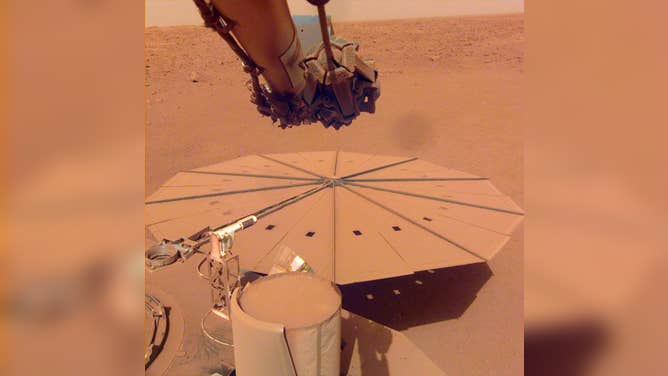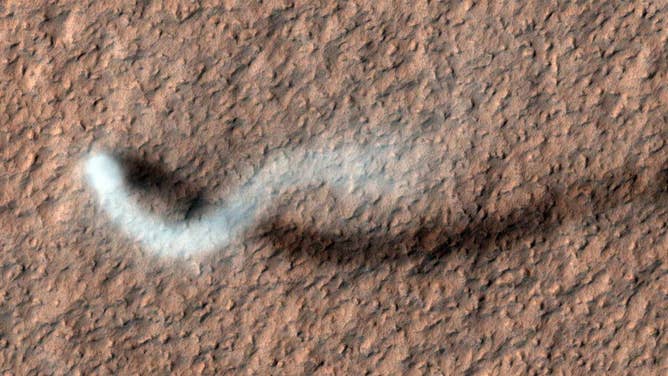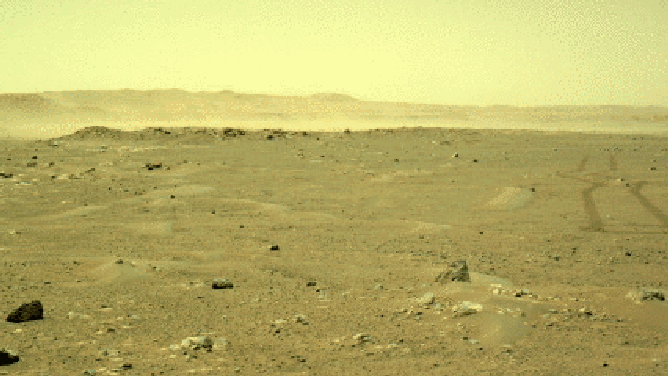Fate of seismic and weather monitoring on Mars depends on dust devil
NASA's InSight Mars lander continues to lose power and science operations are expected to end come summertime

InSight captured this image of one of its dust-covered solar panels on April 24, 2022, the 1,211th Martian day, or sol, of the mission.
NASA says they are preparing retirement plans for their InSight mission and the only thing that could prevent its end is a dust devil.
InSight's mission was originally extended until the end of the year. Still, NASA says it is unlikely to continue operations through the extension because of dust accumulation on its solar panels.
Because it continues to lose power, science operations are expected to end come summertime. Researchers say at the current rate power is declining, InSight's non-seismic instruments will rarely be turned on after the end of May.
Seasons are changing on Mars, and over the next few months, researchers say there will be more dust in the air, reducing sunlight and the lander's power.
Scientists say that the only thing that can prevent its inevitable retirement is a dust devil.
"We've been hoping for a dust cleaning like we saw happen several times to the Spirit and Opportunity rovers," said Bruce Banerdt, InSight's principal investigator at NASA's Jet Propulsion Laboratory in Southern California, which leads the mission. "That's still possible, but energy is low enough that our focus is making the most of the science we can still collect."
But how inevitable is this powerful dust-cleaning event?
"There's dust devils happening all the time on Mars," Andrew Good with the Jet Propulsion Laboratory said.
The NASA Mars Reconnaissance Orbiter took this picture of a dust devil on the Amazonis Planitia region of northern Mars.

A towering dust devil casts a serpentine shadow over the Martian surface in this image from NASA Mars Reconnaissance Orbiter.
"We've detected thousands of them, some relatively close to the lander, but none have gone directly over us to clear off dust," Banerdt notes about dust devils on Mars.
Gusts of wind were recorded sweeping dust across the Martian plain beyond the rover's tracks just last year.

This series of images from a navigation camera aboard NASA’s Perseverance rover shows a gust of wind sweeping dust across the Martian plain beyond the rover’s tracks on June 18, 2021
Good says that because of this, "It could happen at any time. We've been on Mars for almost four years and haven't had a dust cleaning, but we do know they happen."
Scientists say that if just 25% of InSight's panels were swept clean by the wind, the lander would gain about 1,000 watt-hours per day – enough to continue collecting science. And by December, the team expects the lander to become completely inoperative.
Energy is currently being prioritized for the lander's seismometer.
The seismometer has detected more than 1,300 marsquakes, including the most recent magnitude 5 at the beginning of the month.
But if a dust devil doesn't wipe clean the lander, the seismometer will turn off by the end of summer, concluding the mission's science phase.
About NASA's InSight Lander

(NASA/JPL-Caltech)
InSight, the Interior Exploration using Seismic Investigations, Geodesy and Heat Transport, landed on Mars on Nov. 26, 2018.
The mission's seismic monitoring of marsquakes has provided constraints on Mars' interior, formation, and current activity.
Its pair of 7-foot solar panels produce 5,000 watt-hours each Martian day. NASA says this is equivalent to powering an elective oven for an hour and 40 minutes. It has since dwindled to 500 watt-hours per day.
It has operated the only active seismic station beyond Earth. Information gathered from the quakes has allowed scientists to measure the depth and composition of Mars' crust, mantle, and core.
Its mission was recently extended through the end of the year with hopes that it would continue its seismic and weather monitoring.